Intersection Between Mental Health and Addiction
 After maintaining sobriety for several years, Angel moved from her Houston home base to Galveston, away from her recovery support. Knowing she needed mental health assistance, she attempted to get prescribed medication from a community resource. Without coordination and despite her past, she was given a drug in the same family as one of her former drugs of choice and a cocktail of other prescriptions. She was over-medicated and all she wanted to do was sleep, 18 hours a day.
After maintaining sobriety for several years, Angel moved from her Houston home base to Galveston, away from her recovery support. Knowing she needed mental health assistance, she attempted to get prescribed medication from a community resource. Without coordination and despite her past, she was given a drug in the same family as one of her former drugs of choice and a cocktail of other prescriptions. She was over-medicated and all she wanted to do was sleep, 18 hours a day.
She quickly lost her job, her home, and her children and spiraled back to the streets. For the next three and a half years, she lived in hotels and cars and quickly accumulated traffic violations and finally, a charge of possession that triggered criminal justice involvement. She was alone and miserable.
Facing prison, she chose the alternative and again turned to treatment. Angel began the slow process of coming back to herself, in the care of her team at Santa Maria. This time, she found integrated treatment that addressed both her substance use disorder and her mental health issues. Like almost 65% of her peers in treatment, she learned that her life would not be stabilized without balancing both. She had the benefit of a mental health counselor, who was part of her treatment team at Santa Maria. This counselor worked to monitor her medications but also to train Angel in a healthy lifestyle by creating habits that allowed her to establish routines in four key areas: community, health, purpose, and home. She began to slow down and practice gratitude, household organization and time for self-care. These simple, yet essential tools, were incorporated into her daily life. Other SMH team members rallied to her assistance and she grew strong.
Little by little her life improved. She reunified with her children and found an incredible career path. She is now part of a four-person team with the UT Health Heroes Opioid Outpatient Program. She serves a community of those trapped in desperate opioid use, giving the same hope and advice that was given to her.



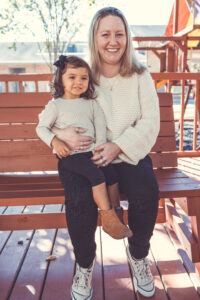 Laura entered Santa Maria on July 4, pregnant, making a decision that she would break her addiction and bring a healthy baby into this world. Drug and alcohol were all she knew as a child, as her mother had been active in her addiction throughout this time. As Laura matured, she continued the pattern. She had lost everything to drugs, but she wasn’t willing to lose this child.
Laura entered Santa Maria on July 4, pregnant, making a decision that she would break her addiction and bring a healthy baby into this world. Drug and alcohol were all she knew as a child, as her mother had been active in her addiction throughout this time. As Laura matured, she continued the pattern. She had lost everything to drugs, but she wasn’t willing to lose this child.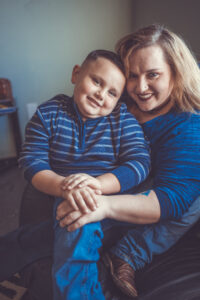 Kerri was born in Marble Falls, Texas. Although she lived in this beautiful small town, her childhood was anything but idyllic. Her father lost custody of her at the age of 2, and she was sent to live with her mother, a woman struggling with a meth addiction. Soon after, her father took his own life. Kerri’s early years were tumultuous, and she was often neglected.
Kerri was born in Marble Falls, Texas. Although she lived in this beautiful small town, her childhood was anything but idyllic. Her father lost custody of her at the age of 2, and she was sent to live with her mother, a woman struggling with a meth addiction. Soon after, her father took his own life. Kerri’s early years were tumultuous, and she was often neglected.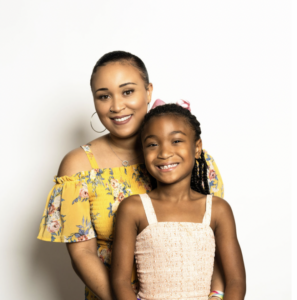 RECOVERY ROOTS
RECOVERY ROOTS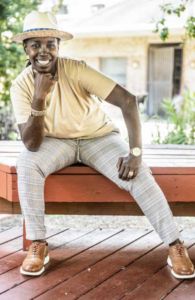 LaNisha’s story starts with trauma. When she was just two years old, her father was murdered; later her mother whom for years suffered from addiction to substances was incarcerated. Once moved to live with her grandparents and younger sibling, she was again faced with continued violence, drug abuse, neglect, and gambling on her grandparents’ side, followed by repeatedly being molested by a family member. Living in such an unsafe environment caused LaNisha’s spirit to sink and feel despair.
LaNisha’s story starts with trauma. When she was just two years old, her father was murdered; later her mother whom for years suffered from addiction to substances was incarcerated. Once moved to live with her grandparents and younger sibling, she was again faced with continued violence, drug abuse, neglect, and gambling on her grandparents’ side, followed by repeatedly being molested by a family member. Living in such an unsafe environment caused LaNisha’s spirit to sink and feel despair.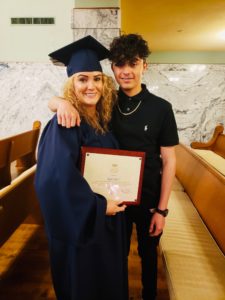 Nicole followed in her mother’s footsteps, she learned to close her feelings off working long hours and withdrawing from her family. This was not the first time she had lived her life this way. She put in many hours every day at her restaurant job and then socialized occasionally. Soon, like times in the past, she began to drink heavily and use cocaine with “friends”. She felt very alone.
Nicole followed in her mother’s footsteps, she learned to close her feelings off working long hours and withdrawing from her family. This was not the first time she had lived her life this way. She put in many hours every day at her restaurant job and then socialized occasionally. Soon, like times in the past, she began to drink heavily and use cocaine with “friends”. She felt very alone.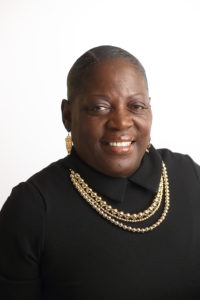
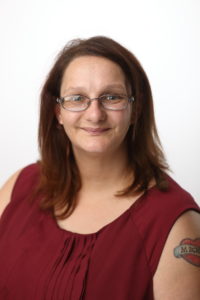 April Dawn was born in a small town in the hills of southeastern Kentucky, given a name that illuminated the light, beauty, and joy of a newborn’s arrival to the world. Somehow, her infancy and childhood became, instead, a nightmare of abuse that left her scarred permanently and alone with her pain and humiliation. April’s parents did not offer love and protection, but were responsible for her abuse. At the age of four, she was hospitalized for six months to heal internal wounds. At 13, she was “sold” to a man that took her away from her home and married her with parental consent. The time in between was a constant story of abuse at the hands of those who were supposed to guide her growth, treasure her spirit. There was no intervention.
April Dawn was born in a small town in the hills of southeastern Kentucky, given a name that illuminated the light, beauty, and joy of a newborn’s arrival to the world. Somehow, her infancy and childhood became, instead, a nightmare of abuse that left her scarred permanently and alone with her pain and humiliation. April’s parents did not offer love and protection, but were responsible for her abuse. At the age of four, she was hospitalized for six months to heal internal wounds. At 13, she was “sold” to a man that took her away from her home and married her with parental consent. The time in between was a constant story of abuse at the hands of those who were supposed to guide her growth, treasure her spirit. There was no intervention.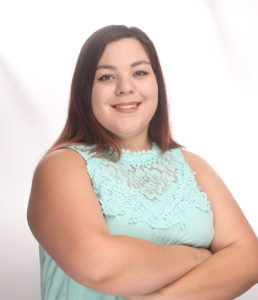 “Loving and forgiving yourself is necessary to change your life”, states Courtney Mendoza, a 29 year old Santa Maria Alumna. Growing up with parents who struggled with addiction, Courtney witnessed the negative effects of addiction throughout her childhood, to the point where she was taken away from her parents by Child Protective Services (CPS) during middle
“Loving and forgiving yourself is necessary to change your life”, states Courtney Mendoza, a 29 year old Santa Maria Alumna. Growing up with parents who struggled with addiction, Courtney witnessed the negative effects of addiction throughout her childhood, to the point where she was taken away from her parents by Child Protective Services (CPS) during middle 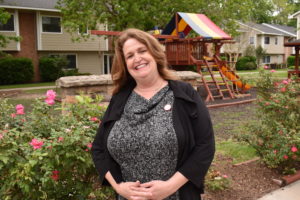 The year 2012 marked the fourteenth time of incarceration in a period of 10 years for Sharon, as a result of her substance use disorder. She recalls sitting in her jail cell feeling broken, hopeless, simultaneously suffering from other health issues— she felt she had hit rock bottom.Suddenly, it was here– the day that changed her life forever. She recalls seeing three women walking into the prison and staring directly at her. “It was the first time I felt someone look at me with pure love—that, I will never forget.” She recalls. The women she was referring to were Santa Maria’s recovery coaches (at the time) Amelia Murphy and Cynthia Branch who teamed up with Kathy Griffin, a long-time recovery partner, and now-director of the Precinct One human trafficking division. Sharon remembers clearly their words that have remained with her forever: “It is not too late for your dreams to come true. What God has in store for you is going to blow your mind.” After learning about Santa Maria’s Path to Recovery program, combined with the trust and connection she felt with the coaches, she did not hesitate and agreed to participate in the program. For the next three months the trio would visit Sharon in prison where she would participate in group sessions, as part of the Path to Recovery program.
The year 2012 marked the fourteenth time of incarceration in a period of 10 years for Sharon, as a result of her substance use disorder. She recalls sitting in her jail cell feeling broken, hopeless, simultaneously suffering from other health issues— she felt she had hit rock bottom.Suddenly, it was here– the day that changed her life forever. She recalls seeing three women walking into the prison and staring directly at her. “It was the first time I felt someone look at me with pure love—that, I will never forget.” She recalls. The women she was referring to were Santa Maria’s recovery coaches (at the time) Amelia Murphy and Cynthia Branch who teamed up with Kathy Griffin, a long-time recovery partner, and now-director of the Precinct One human trafficking division. Sharon remembers clearly their words that have remained with her forever: “It is not too late for your dreams to come true. What God has in store for you is going to blow your mind.” After learning about Santa Maria’s Path to Recovery program, combined with the trust and connection she felt with the coaches, she did not hesitate and agreed to participate in the program. For the next three months the trio would visit Sharon in prison where she would participate in group sessions, as part of the Path to Recovery program.